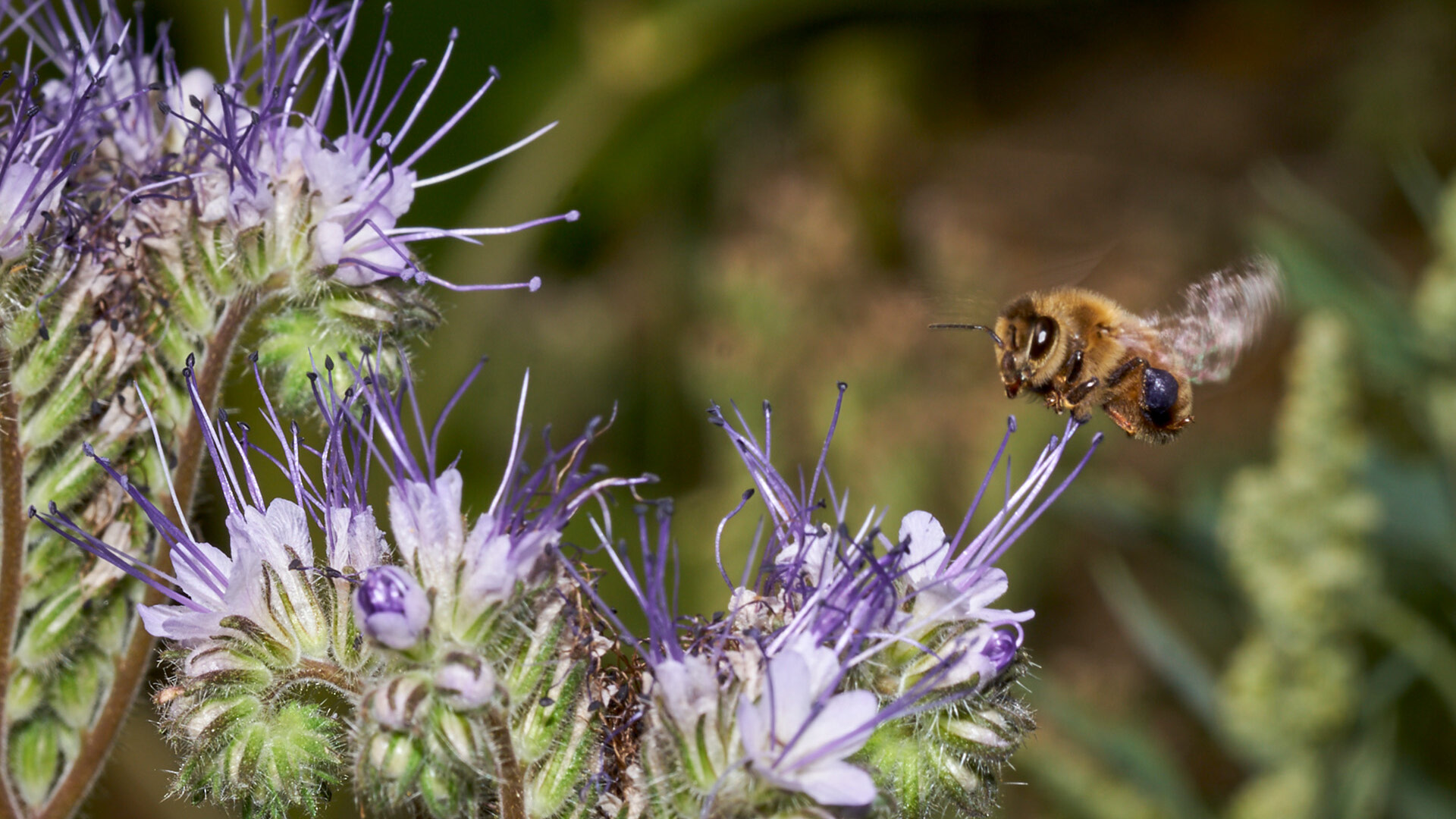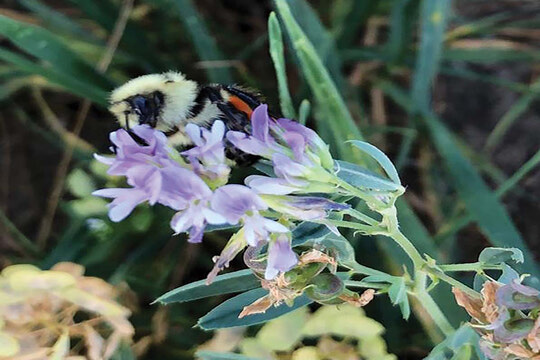Project AbstractThis project experimented with using pollinator sanctuaries on marginal lands to address the serious decline in bee populations experienced in recent decades. Bees, moths, butterflies, beetles and several species of fly's help pollinate numerous crops like canola, clovers, alfalfa, several forest and fruit trees as well as various species of vegetables across North America. Among all these insect pollinators, bees perform the most significant role in the natural cross pollination of a wide diversity of crops. The decline is a problematic trend because pollinator populations have a direct impact on future agricultural productivity, forestry & apiculture as well as on the stability of natural ecosystems. Conserving natural insect pollinators like bees is necessary to secure the future of these industries. This study evaluated the potential of pollinator sanctuaries in 2019 on a site in the dark brown soil zone of southern Alberta. We assessed the impact of early (May) and late (July) seeding dates on establishment of five different kinds of plant mixes. Initially, this project planned to include native flower mixes, but we excluded these treatments because we couldn't source the required amount of seeds for our small plots. |
|
||||||||||
Project Objectives
|
|||
MethodsStudy design was RCBD (randomized complete block design) with four replicates per treatment in 2m x 6m research plots. As listed below, Farming Smarter seeded 5 treatments for the early seeding date (May 28, 2019) and 7 treatments for the late seeding date (July 10, 2019). |
|||||||||||||
|
|
||||||||||||
Measurements
|
|||||||||||||
ResultsFarming Smarter saw a rich biodiversity of pollinators including honeybees, native bees, moths, butterflies, flies and beetles in the research plots. The diversity of plant species seeded enriched local biodiversity and created a refuge for not only the pollinators, but also passerine birds, waterfowl, game birds, raptors, mammals and reptiles. Seeding date significantly impacted species establishment, therefore we can't recommend seeding late in the season. Early seeding date had an average of 72% survival compared to 54% for the late seeding. Species establishment for early seeding improved to 84%, if we excluded poor establishing wildflower mix while establishment was 61% for late seeding. We recommend excluding wildflower mix as it had a very low percent establishment for both seeding dates. When comparing the average plant density for the early seeded plots, there was no significant difference between annual, annual-perennial and perennial mixes. Plant density for the wildflower mix was very low and caused significant increase in weed density and competition. Average crop biomass highlights the difference between treatments as well, with the annual, annual-perennial and perennial mixes having higher crop biomass for the early seeding date. No statistical difference between treatments in the late seeding date. Most species in each mix established easily, outside of wildflowers, and successfully attracted a diversity of pollinator species including Lepidoptera (butterflies), Diptera (flies), Hymenoptera (bees and wasps) and Coleoptera (beetles). As indicated by the data collected from yellow sticky cards, butterflies and flies increased in abundance across the sampling period, while bees, wasps and beetles declined in abundance. The movement of hives in and out of the area may account for the abundance of honeybees and may have skewed the numbers. As was expected, the majority of plants flowered between May and September. The plants flowering early and late in the season provide a source of food when it is scarce. Early flowering species include Balansa and Berseem clover, while late season flowering plants include Alfalfa, perennial sunflower, Persian clover, Phacelia, Red clover and Sainfoin. |
RecommendationsWe recommend early seeding as it led to higher establishment of plant species compared to the later seeding (72% vs 54%). Among the different kinds of plant mixes annual, annual-perennial, and perennial mixes had higher species establishment, plant density and crop biomass compared to other plant mixes for the early seeding date. Numerous agricultural crop species provide a practical solution to creating sustainable, low cost, low maintenance options to meet nesting & foraging needs of insect pollinators like bees. Perennial mixes are ideal for areas that are not going to be managed yearly including along roadways and water bodies, or marginal lands. Annual mixes with legumes are good options for pivot corners to improve soil quality through nitrogen fixation. Pollinator mixes will create habitat and food for many vertebrates, invertebrates as well as insects. Most of the crops used in the mixes can be used as forage, therefore they can be seeded into tame pastures or grazing areas for fall grazing. Project video |
||
Articles
If you build it, they will come - take a pivot corner, a fence line or a ditch and turn those into a bed and breakfast for bees....
Pollinator project aimed to develop a long term, comprehensive, cost-effective and sustainable seed mix to conserve natural insect pollinators and enhance local biodiversity in southern Alberta.


